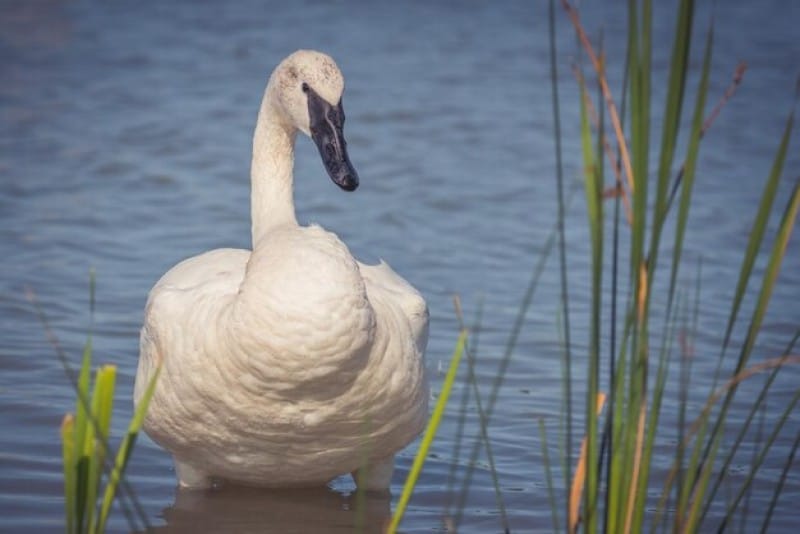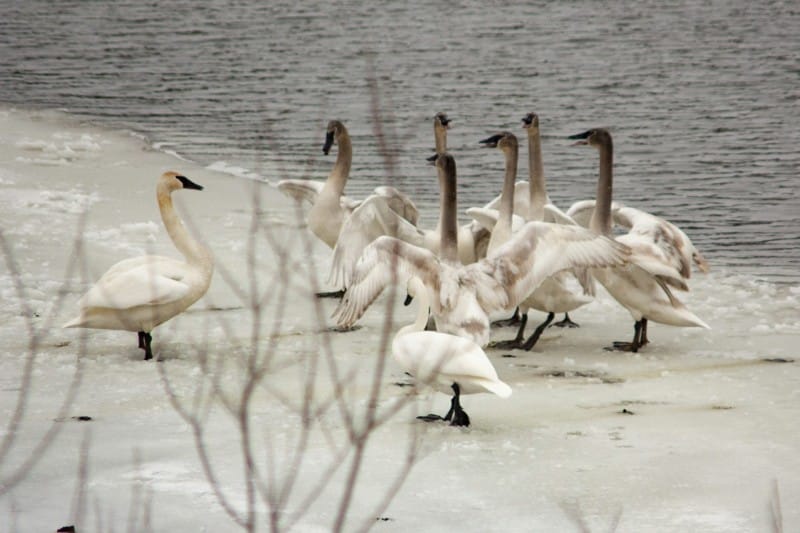Canada is home to an incredibly diverse range of bird species, thanks to its vast landscapes and varied ecosystems. Among these avian wonders, one stands out in size and majesty — the Trumpeter Swan. If you’ve ever asked yourself, what is the largest bird in Canada?, the answer lies in this graceful and powerful bird that captures the imagination of birdwatchers and nature lovers across the country.

Meet the Trumpeter Swan – Canada’s Largest Bird
The Trumpeter Swan (Cygnus buccinator) holds the title of the largest bird in Canada, both in terms of weight and wingspan. Adult trumpeter swans can weigh up to 13.6 kilograms (30 pounds) and boast a wingspan that stretches over 3 meters (10 feet). These characteristics make them not only the largest bird in Canada, but also among the largest flying birds in North America.
Trumpeter swans are named for their distinctive trumpet-like call, which can be heard echoing across lakes and wetlands. Their pure white plumage, long necks, and striking black bills give them a regal appearance that is unmistakable in the wild.
Where Can You See the Trumpeter Swan?
Trumpeter swans were once on the brink of extinction due to overhunting and habitat loss. However, thanks to conservation efforts, their populations have rebounded significantly. Today, the largest bird in Canada can be spotted across western and central Canada, particularly in the Yukon, British Columbia, Alberta, Saskatchewan, and Manitoba.
During the summer breeding season, they nest near shallow freshwater lakes, ponds, and marshes. In the winter, many migrate south to parts of the United States, though some remain in ice-free areas of British Columbia.
Physical Characteristics of the Trumpeter Swan

Understanding the size and features of the Trumpeter Swan helps us appreciate why it holds the top spot as Canada’s largest bird:
• Wingspan: Up to 10 feet (3.05 meters)
• Weight: 21 to 30 pounds (9.5 to 13.6 kilograms)
• Height: Around 4 feet (1.2 meters)
• Color: Pure white with black beak and legs
• Lifespan: Up to 24 years in the wild
Their size and strength allow them to take off from water with a few strong flaps — an impressive sight to witness in person.
Behavior and Diet
Trumpeter swans are mostly herbivores. They feed on aquatic vegetation, including pondweed, duckweed, and algae. In the summer, they may also graze on grasses and grains in surrounding meadows.
These birds are monogamous, often mating for life. Pairs build large nests on small islands or floating vegetation mats, and they fiercely guard their territory during breeding season.

Importance to Canadian wildlife and conservation
The story of the largest bird in Canada is also one of the country’s great conservation success stories. In the early 20th century, the bird was nearly wiped out, with fewer than 70 individuals known to exist. Through decades of dedicated habitat protection and reintroduction programs, their numbers have surged to over 16,000 in North America.
Today, they play a crucial role in maintaining healthy wetland ecosystems and are a symbol of what’s possible with long-term environmental stewardship.
Other Large Birds in Canada
While the Trumpeter Swan is the largest bird in Canada, the country is also home to other impressive large birds, such as:
- Bald Eagle – With a wingspan up to 7.5 feet
- Great Blue Heron – Tall and elegant, often mistaken for a crane
- Canada Goose – Common and well-known, but smaller than the swan
Each plays its own unique role in Canada’s ecosystems, but none surpasses the Trumpeter Swan in overall size.
Final Thoughts

So, what is the largest bird in Canada? The answer is clear: the Trumpeter Swan, a magnificent symbol of natural beauty and conservation success. Its sheer size, elegance, and resilience make it a treasure of Canada’s wildlife. Whether you’re exploring wetlands in British Columbia or observing migratory flocks in the prairies, keep an eye out for these graceful giants— a true highlight of Canada’s avian kingdom.

[…] 👉 What is the largest bird in Canada? […]